The Ministry of National Defense (MND) yesterday for the first time publicly confirmed that its US$1.3 billion long-range early-warning radar (EWR) system in Hsinchu was operational and said it had tracked a highly controversial rocket launch shortly after it blasted off in North Korea.
In a statement, the ministry said it closely monitored the launch and that the rocket’s flight did not pose any threat to national security.
“Our long-range early-warning radar system detected the North Korean rocket flying over waters about 200km east of Taiwan, and that the first and second stages of the rocket crashed into waters off South Korea and the Philippines respectively,” the ministry said in a statement.
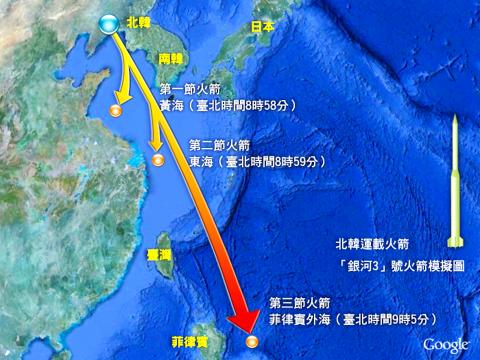
Photo: CNA screen grab from Google Maps
Ministry spokesman Major General David Lo (羅紹和) said Chief of General Staff General Lin Chen-yi (林鎮夷) was charged with monitoring the situation at Hengshan Headquarters during the launch, adding that US-made Patriot missiles, domestically built Tien Kung air defense systems and Kidd-class destroyers equipped with surface-to-air missiles monitored the launch and were ready to respond.
This was the first time the ministry mentioned the radar system, which was built by US-based Raytheon Corp, as being operational. To date, the military has revealed few technical details about the radar installation, known as the “Anpang Project,” at Leshan (樂山) in Hsinchu County.
Lo later said that the radar system was formally inaugurated on Tuesday and has been operational since.
The installation’s development began in 1999, when US defense officials stressed the importance of Taiwan having early-warning capabilities to track Chinese missiles.
Following a series of debates in the legislature, a US$800 million request by the ministry was granted in November 2003 to fund one EWR site. In March the following year, a notification to US Congress made provisions for two EWR systems for US$1.8 billion, but in June 2005, Taiwan signed a US$752 million contract with Raytheon for only one radar system, with delivery in 2009, the Congressional Research Service said in its annual report on US arms sales to Taiwan, released last month.
Despite reports alleging that the current administration had abandoned plans to acquire a second EWR system, the decision not to do so was made in 2007, with industry sources saying it may have occurred as early as 2003.
From the onset, the program was plagued by a series of delays and cost overruns, bringing the total bill to about US$1.37 billion after three requests for additional funding.
Critics of the program have said Taiwan has paid far more than other US allies for such capabilities and accused Washington of using the EWR as a “money pit.”
Described as the most powerful EWR installation on the face of the planet, Taiwan’s radar can simultaneously track as many as 1,000 airborne targets the size of a golf ball within a range of 3,000km. The system can also track aircraft and may have the ability to monitor targets at sea, though there are doubts that the satellite-tracking is active.
The radar’s reach will give Taiwan a six-minute warning of a missile launch by China. Although defense officials have refused to confirm this publicly, Taiwan will likely share some of the data acquired through the radar with US forces based in the Pacific.
A spokesman for President Ma Ying-jeou (馬英九) quoted him as saying that Pyongyang’s launch was “unwise” and created regional tensions.
The Democratic Progressive Party (DPP) also reacted.
“The DPP staunchly opposes any provocative act that threatens regional security,” DPP Chairman Su Tseng-chang (蘇貞昌) said.
Su added that, unlike the US, South Korea and Japan, the Ma administration had failed to make sufficient preparations nor responded instantly “with the rocket already at the front door.”
“[The Ma administration] acted like this had nothing to do with Taiwan,” Su said.
Additional reporting by Rich Chang and Chris Wang
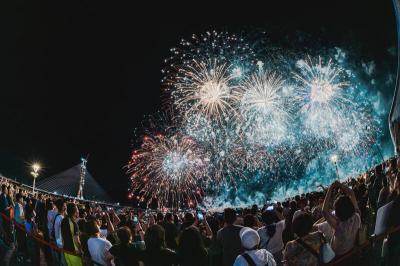
Taiwan is gearing up to celebrate the New Year at events across the country, headlined by the annual countdown and Taipei 101 fireworks display at midnight. Many of the events are to be livesteamed online. See below for lineups and links: Taipei Taipei’s New Year’s Party 2026 is to begin at 7pm and run until 1am, with the theme “Sailing to the Future.” South Korean girl group KARA is headlining the concert at Taipei City Hall Plaza, with additional performances by Amber An (安心亞), Nick Chou (周湯豪), hip-hop trio Nine One One (玖壹壹), Bii (畢書盡), girl group Genblue (幻藍小熊) and more. The festivities are to
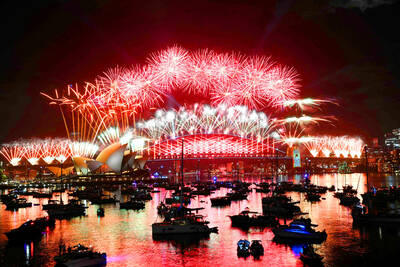
Auckland rang in 2026 with a downtown fireworks display launched from New Zealand’s tallest structure, Sky Tower, making it the first major city to greet the new year at a celebration dampened by rain, while crowds in Taipei braved the elements to watch Taipei 101’s display. South Pacific countries are the first to bid farewell to 2025. Clocks struck midnight in Auckland, with a population of 1.7 million, 18 hours before the famous ball was to drop in New York’s Times Square. The five-minute display involved 3,500 fireworks launched from the 240m Sky Tower. Smaller community events were canceled across New Zealand’s
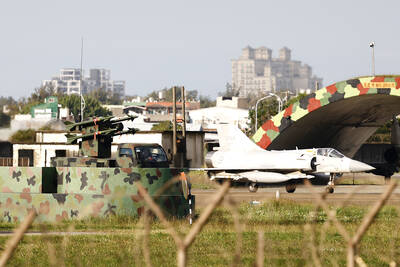
‘IRRESPONSIBLE’: Beijing’s constant disruption of the ‘status quo’ in the Taiwan Strait has damaged peace, stability and security in the Indo-Pacific region, MOFA said The Presidential Office yesterday condemned China’s launch of another military drill around Taiwan, saying such actions are a “unilateral provocation” that destabilizes regional peace and stability. China should immediately stop the irresponsible and provocative actions, Presidential Office spokeswoman Karen Kuo (郭雅慧) said, after the Chinese People’s Liberation Army (PLA) yesterday announced the start of a new round of joint exercises around Taiwan by the army, navy and air force, which it said were approaching “from different directions.” Code-named “Justice Mission 2025,” the exercises would be conducted in the Taiwan Strait and in areas north, southwest, southeast and east of Taiwan
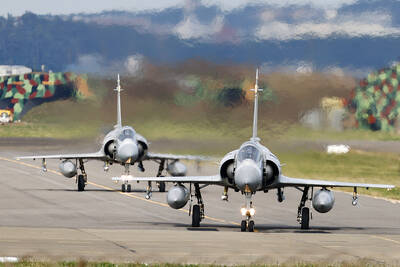
UNDER WAY: The contract for advanced sensor systems would be fulfilled in Florida, and is expected to be completed by June 2031, the Pentagon said Lockheed Martin has been given a contract involving foreign military sales to Taiwan to meet what Washington calls “an urgent operational need” of Taiwan’s air force, the Pentagon said on Wednesday. The contract has a ceiling value of US$328.5 million, with US$157.3 million in foreign military sales funds obligated at the time of award, the Pentagon said in a statement. “This contract provides for the procurement and delivery of 55 Infrared Search and Track Legion Enhanced Sensor Pods, processors, pod containers and processor containers required to meet the urgent operational need of the Taiwan air force,” it said. The contract’s work would be